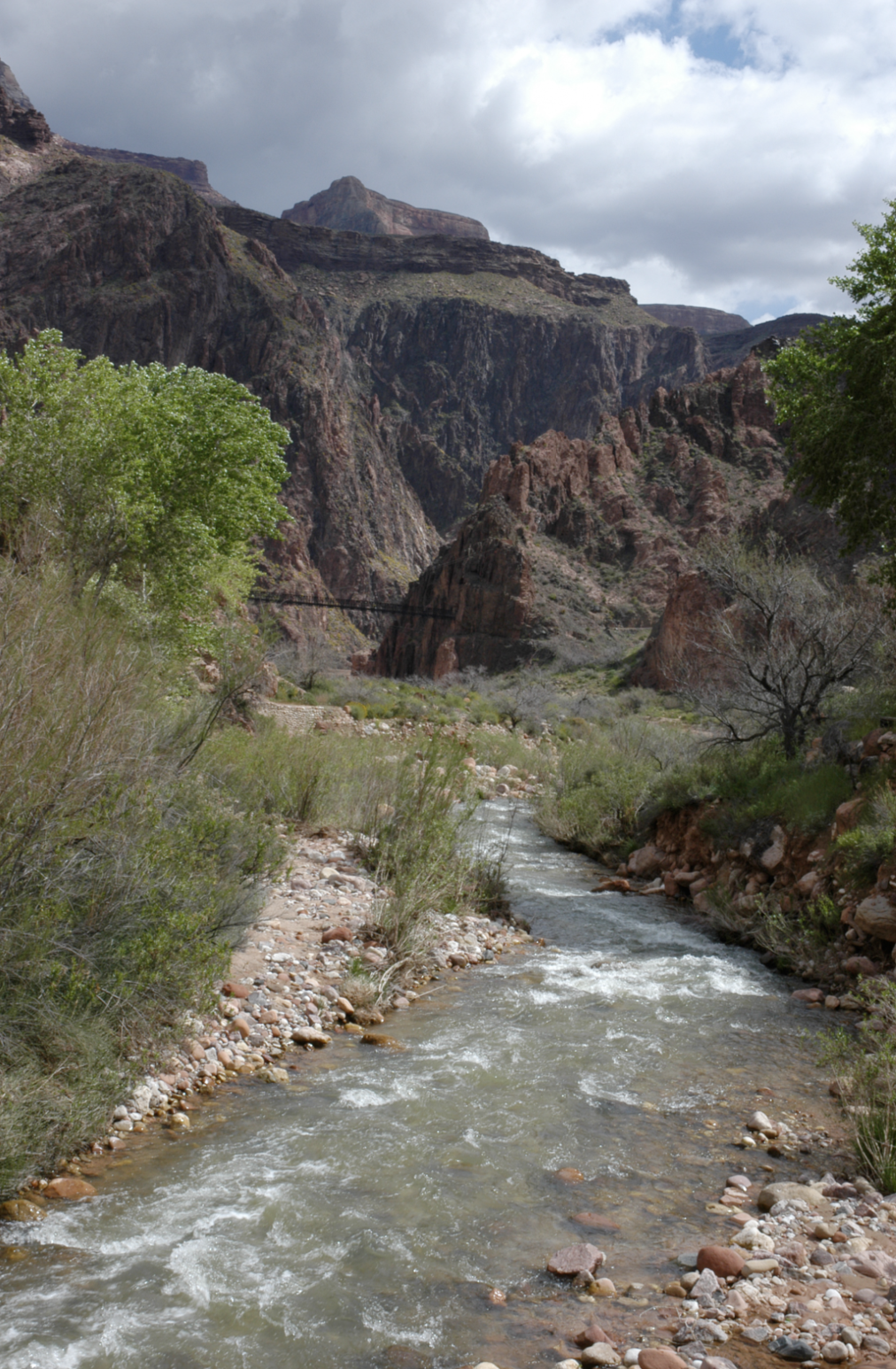One of the most significant threats to the survival of the Colorado River’s native fishes in Grand Canyon’s clear water tributaries is competition and predation from non- natives (Henery 2005, this volume). This threat is especially relevant for Bright Angel Creek where rainbow and brown trout are already known to be established (Leibfried et al. 2003, Epstein 2005, this volume).
During a visit to Bright Angel Creek, both habitat assessment and fish and aquatic invertebrate sampling were performed. Habitat in Bright Angel Creek appeared suitable for trout (Figure 1). In addition, several invertebrate taxa commonly predated on by trout were observed. While rainbow trout were observed in the stream, there numbers were not as great as we expected, given the quality of the habitat in Bright Angel Creek, the abundance of food resources and the degree of turbidity and disturbance from flow oscillation in the mainstem. One hypothesis for the lack of trout abundance observed in Bright Angel Creek is that high flows from an unusually wet spring, paired with recent restorative bank stabilization may have significantly decreased the amount of suitable habitat present in the creek at the time of our visit. However, trout are fast-water-adapted fish and should be able to handle the elevated flows.
Structurally, Bright Angel Creek appeared to provide habitat well suited to an invasive rainbow and brown trout population. Water in the creek was cold clear and swift (though warmer than the mainstem). A great deal of riparian vegetation was present including willow and cottonwood. The riparian corridor ranged from approximately 8-25 feet in diameter and provided a fair amount of in-stream cover and shading. The creek was generally of a riffle-pool type, with sporadic cobble bars, and instream boulders present. Riffle-pool distinctions and transitions were somewhat masked by high flows. Restoration in the form of artificial bank stabilization had been performed recently, and the resulting channelized sections may have compounded the lack of clear riffle pool distinctions.

Figure 1. Bright Angel Creek at Phantom Ranch (Henery 03/20/2005).
The invertebrate biomass observed in Bright Angel Creek was fairly high and composed of species commonly predated on by trout. The major taxa observed included Plecoptera (stoneflies), Tricoptera (caddisflies), and Ephemoptera (mayflies). Invertebrates were observed primarily clinging to rocks in riffle sections, near the banks and on cobble bars.
Despite structurally suitable habitat and a rich and somewhat diverse invertebrate food source, hook and line sampling and observation yielded only one rainbow trout of approximately 14 inches. A second rainbow trout was observed but no brown trout or other fish species native or invasive were observed.
Given the historic presence of spawning rainbow and brown trout in Bright Angel Creek, and the high level of turbidity in the mainstem at the time of our visit, we were surprised that sampling and observation did not yield greater numbers of trout. Our principle hypothesis for the low numbers is that elevated flow in the Creek, paired with restorative bank stabilization may have significantly reduced available refuge from the current. Specifically, larger fish may have out-competed smaller ones for limited cover leaving smaller fish to be washed into the mainstem. This hypothesis is supported by the fact that the two rainbow trout observed were of a large size. Hook and line is relatively unreliable as a sampling method for brown trout, therefore the fact that brown trout were not observed during our visit does not necessarily suggest that they were absent. Further, only a limited section of the stream was observed and the highest quality spawning habitat may be further upstream.
Our sampling and habitat assessment in Bright Angel Creek shows that rainbow trout populations persist in the stream and may well be impacting its ecology through predation on the rich invertebrate community and competition with native fishes for limited habitat. However, the potential impact of unusually high flows in the creek at the time of sampling made it difficult to ascertain the extent of trout invasion under lower flow conditions.
REFERENCES
Leibfried, W., Johnstone, H., and Cross, J. 2003 Trout Removal in Bright Angel Creek, Grand Canyon National Park: A potential recovery effort for native fishes. Grand Canyon National Park: Proceedings from symposium.
